What Camera Has The Best Mechanical Zoom
Best mirrorless photographic camera 2022: the top choices for photography and video
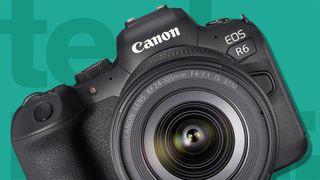
Searching for the best mirrorless camera you tin purchase? From affordable entry-level models to the latest flagship cameras, we've tested all of the top mirrorless options available in 2022. So whether you're upgrading from your current mirrorless photographic camera or switching from a DSLR, this buying guide volition assist you observe the right one for you lot.
This year has seen the arrival of some excellent mirrorless cameras from the likes of Olympus and Panasonic, but and then far none has managed to trump the Sony A7 Four. If yous take the budget, we think it's the best mirrorless camera yous can buy in 2022. If you lot want to spend a footling less, though, and so Fujifilm's 10-T4 likewise produces excellent results, backed up by speedy burst shooting, in a shell with convenient proportions.
For something that's fifty-fifty more affordable, we'd bank check out the Fujifilm X-S10 and Nikon Z fc. Those mid-range cameras offer a compelling alloy of retro styling, portability and shooting fun that'south more powerful enough for most apprentice creatives (and some pros, also). Looking for a real bargain? For sheer value, our top picks are the Olympus OM-D E-M10 Mark IV and Fujifilm Ten-T200, both of which are platonic for beginners.
Our listing contains some of the best cameras for photography and the all-time video cameras, besides. But at that place might exist a meliorate choice if you're in the chase for the all-time full-frame photographic camera for you. The Catechism EOS R5, for case, is Catechism's all-time-e'er stills camera, while the EOS R3 is a winner for fast-activeness photography. If it's an all-rounder you lot're afterward, the Catechism EOS R6 is a worthy alternative to the Sony A7 IV: it ships with brilliant in-body image stabilization, super autofocus and the ability to tape 4K video at 60p. Plus it's practiced for 12fps burst shooting.
Many of the hybrid mirrorless models featured below are also targeted at budding videographers. Sony'southward full-frame A7S III is a winning pick for fledgling 4K filmmakers, with big pixels delivering superlative low-light performance. Or for a lightweight video powerhouse, take a await at the Panasonic Lumix GH6: with 5.7K recording and an arsenal of ten-chip video modes, this Micro Four Thirds model ticks all the correct boxes.
Mirrorless models come in all kinds of shapes, sizes and spec levels. That's why our buying guide covers everything from entry-level options like the Nikon Z5, to top-end trailblazers like the Sony A1. We've also included a few older mirrorless models that go on to offer excellent value in 2022. Not sure where to starting time? Gyre to the bottom of list and you'll find useful communication to keep in mind when choosing your ideal mirrorless model.
The best mirrorless cameras in 2022:
The best enthusiast mirrorless cameras

The Sony A7 Iv is a truly mod hybrid camera. It's overkill for beginners and more expensive than its stills-focused contest, but it'southward besides a versatile workhorse for anyone who want to shoot a mixture of photos and video. A price bump ways it no longer occupies the same entry-level toll subclass as its pop predecessor, but upgrades like x-bit video and a Bionz XR processor make it an even more powerful option.
In our tests, nosotros found the A7 4 to have course-leading autofocus skills, plus a seemingly endless buffer depth with CFexpress cards that swallowed 9fps for over a minute (or 6-7fps when continuously shooting raw). Its new 33MP full-frame sensor doesn't dramatically improve image quality over the A7 Three (the higher resolution besides means adequately prevalent noise above ISO 6400), and there's a heavy ingather on 4K footage. But every bit a complete package, the Sony A7 Four is a solid all-rounder which could be the merely mirrorless photographic camera you ever demand.
- Read our in-depth Sony A7 IV review


Looking for a mirrorless camera that's equally comfortable shooting stills and 4K video? Few cameras do it meliorate than the Fujifilm X-T4, which is both smaller and more affordable than its full-frame rivals. The all-time APS-C camera so far, our tests found that it serves up a compelling blend of nifty build quality, grade-leading epitome quality and a fun shooting experience. We also remain fans of the Fujifilm X-T3, which is notwithstanding on sale and worth considering if you mainly shoot stills.
The 10-T4 takes the serial to new heights thank you to the inclusion of in-torso prototype stabilization (IBIS), a new battery, and a new, quieter shutter. During our shoots, these created an enjoyable shooting experience and produced results that trump the Ten-T4's rivals for low-light performance and resolved detail. We'd have liked a slightly deeper grip and the IBIS system isn't quite up to Olympus standards, but it's a big bonus for both shooting both stills and video, and tops off a fine all-rounder that now has an excellent range of lenses.
- Read our in-depth Fujifilm Ten-T4 review

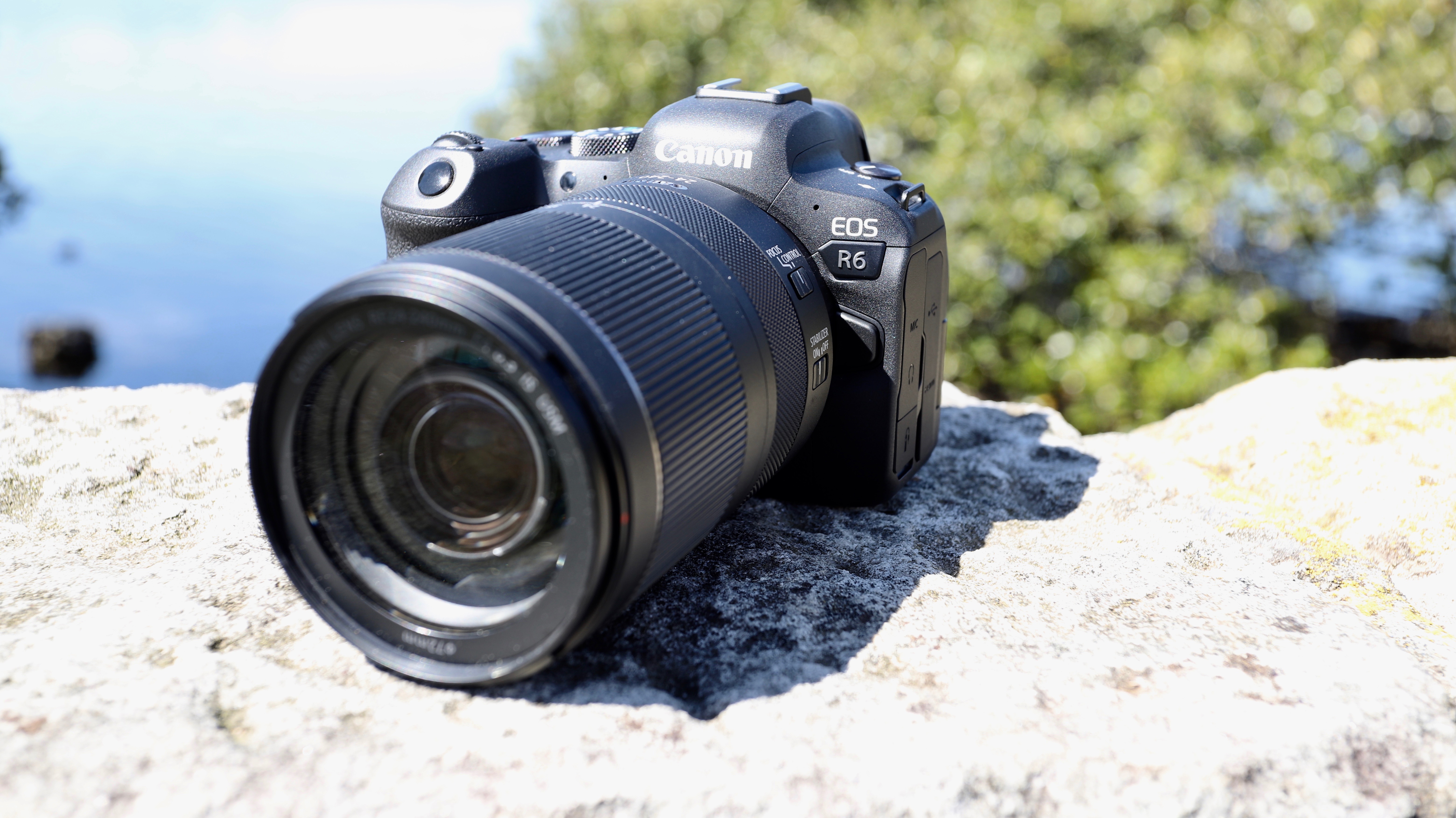
If y'all own a Canon DSLR and have been waiting to make the move to mirrorless, the EOS R6 is the camera for you. Information technology'southward also a very worthy upgrade from Canon's early mirrorless launches similar the EOS R, too. 1 of the main reasons is the EOS R6's excellent autofocus – there'due south no other camera in this class that can shell its Dual Pixel CMOS AF Ii organisation, which brings excellent subject detection (including animals) and tracking.
The EOS R6 is a big improvement on Catechism'due south original mirrorless models across the lath too, with impressive in-trunk image stabilization (IBIS), speedy 12fps burst shooting when using the mechanical shutter and decent 4K/60p video skills, also. We constitute that the EOS R6'due south recording limits and rolling shutter bug make information technology more than of a stills camera than a video workhorse, just as long as that 20MP resolution is plenty for you lot, it's undoubtedly 1 of Canon'due south best always cameras.
- Read our in-depth: Canon EOS R6 review


For a long time, the full-frame Nikon Z6 reigned as our number one camera. This successor remains an excellent performer, particularly for those looking to upgrade from Nikon DSLRs, but the Z6 2's modest updates mean it'southward fallen slightly behind the very best mirrorless cameras. Information technology yet comes highly recommended, though, thank you to its consistency in most areas, with the addition of a second Expeed half dozen processor bringing a range of performance improvements that include a new 14fps burst shooting speed.
In our tests, we constitute the autofocus to be a pregnant comeback on the Nikon Z6, especially with animal eye/face detection, and the Z6 II adds a much-needed UHS-II SD card slot alongside the existing XQD/CFexpress slot. Video does now lag slightly backside hybrid rivals similar the Sony A7 IV. But with a tried-and-tested 24MP total-frame BSI CMOS sensor, which delivers very practiced loftier ISO performance, and the all-time treatment effectually, it fully deserves its identify at the top table for photographers.
- Read our in-depth Nikon Z6 II review

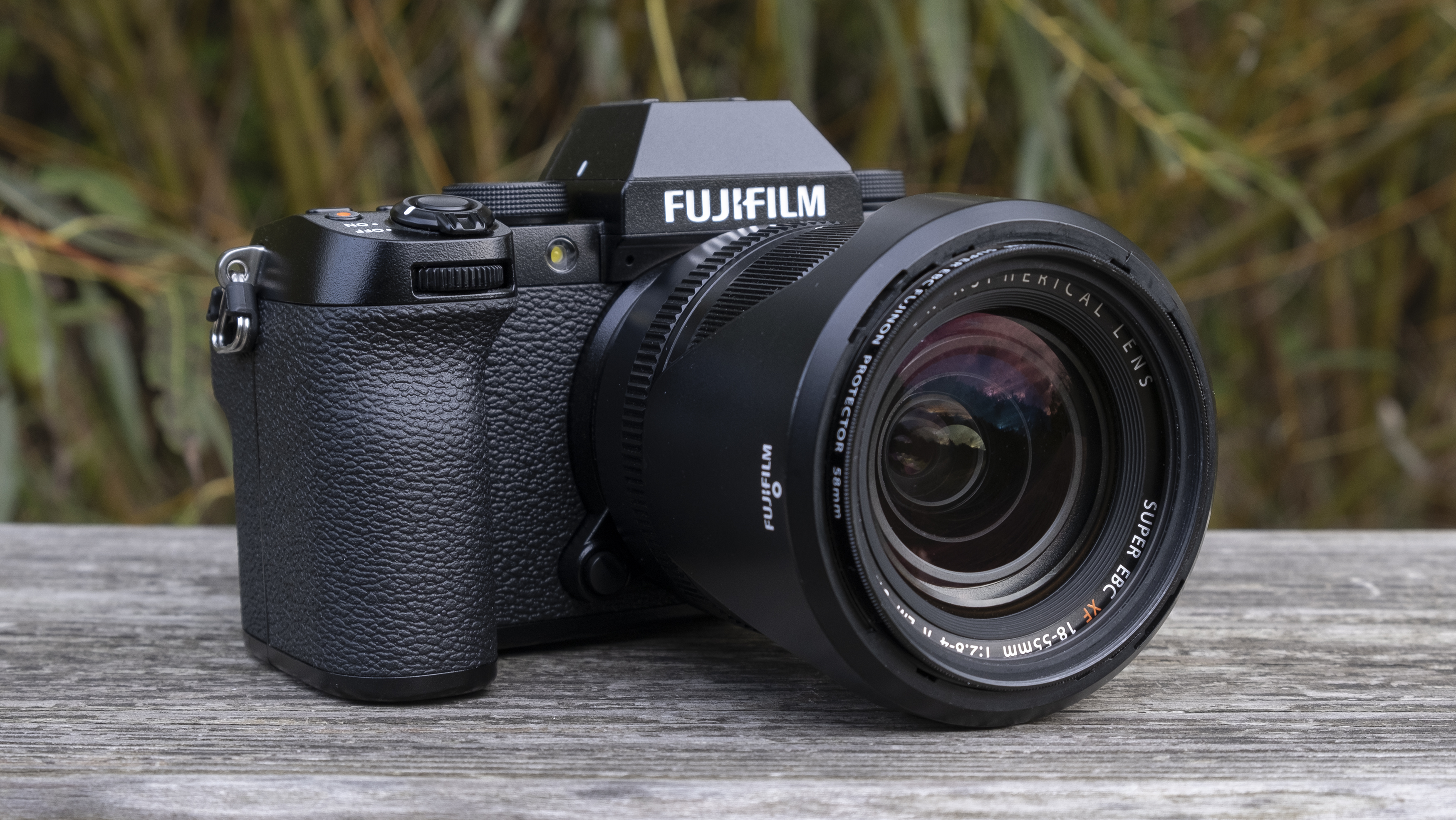
By shoehorning several highlights from the excellent X-T4 – including IBIS – into a cheaper, more compact trunk, Fujifilm has created the best mid-range mirrorless cameras for beginners and hobbyists. The Fujifilm X-S10 packs stacks of shooting power into a modest shell that handles well. In the hand, its chunky grip and simplified dials get in experience like a classic DSLR (without the unnecessary bulk), while the amuse of its retro styling speaks for itself.
The proven APS-C sensor and X-Processor iv combo makes the 10-S10 a truthful all-rounder, every bit comfy shooting stills as it is capturing quality 4K footage. Nosotros found its just real weakness to be autofocus performance: AF is still impressive in most situations, but subject field-tracking isn't as advanced every bit the systems seen on cameras like the Sony A6600. While it might not be the first selection for activeness snappers, the X-S10's IBIS organization is also a boon for handheld shooters. Provided you can do without weatherproofing, the 10-S10 is superb mid-range mirrorless camera.
- Read our in-depth Fujifilm X-S10 review

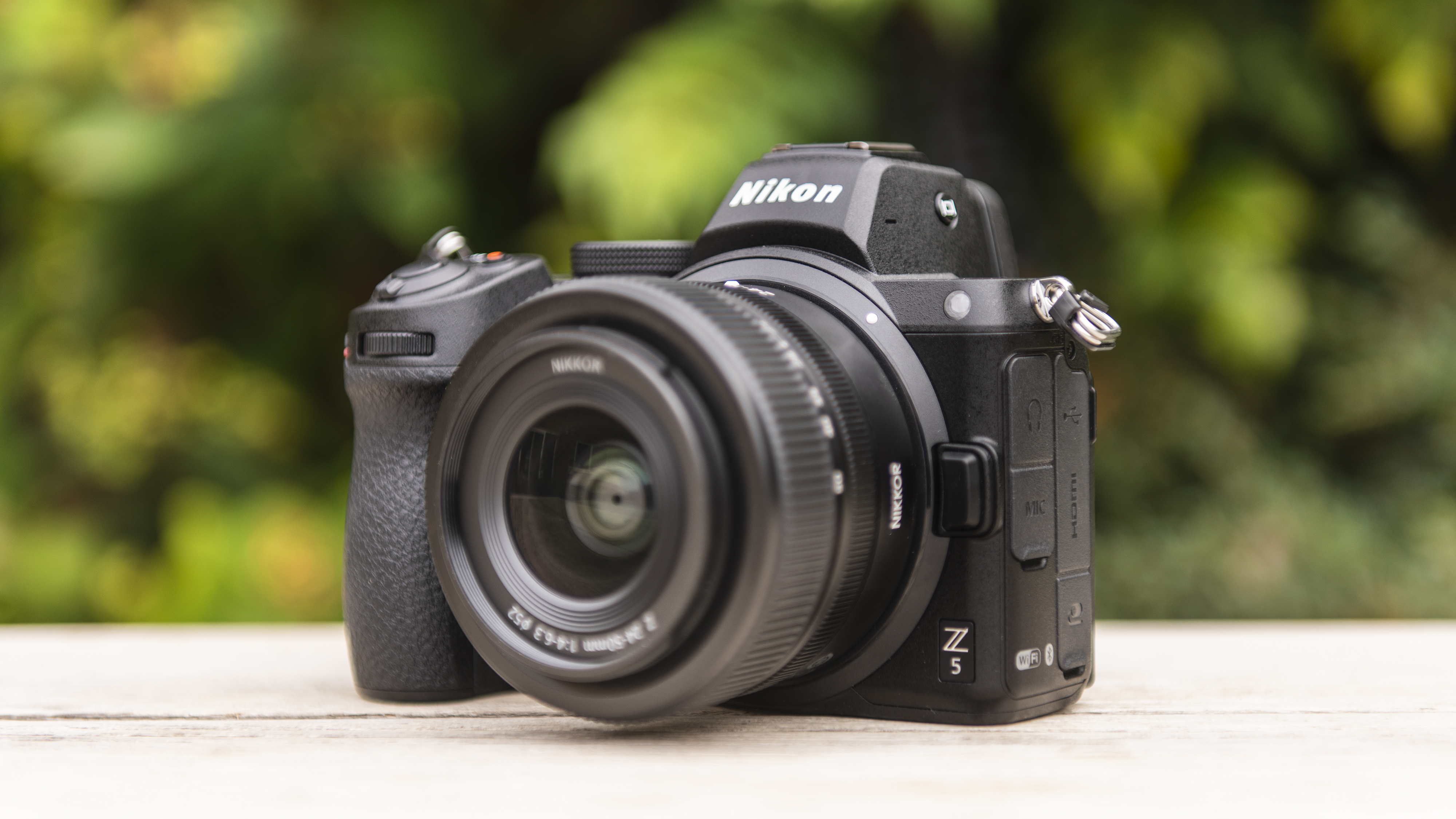
The Nikon Z5 is the all-time entry-level full-frame mirrorless camera you tin can buy right now – although it depends a little on how you ascertain 'entry-level'. On the spec sheet, there'southward enough that appeals. Nosotros constitute that the large 24MP total-frame sensor produces lovely images in well-lit situations, while the large, brilliant EVF and 3-inch tilt-angle touchscreen brand composing shots a joy. The 273-point autofocus is also very effective, coping well with both static and moving subjects. And the camera itself is a lovely matter to shoot with, offering a large, comfortable grip and a nice control layout.
Less impressive is the iv.5fps outburst shooting speed, while a tight one.7x sensor ingather on 4K footage limits its use as a videography tool. Still, it should tick pretty much all the boxes for those new to the genre or Nikon fans after a 2nd body. The biggest issue? Toll: as prices for the older merely more than capable Nikon Z6 continue to fall, the Z5 looks like a less persuasive proposition.
- Read our in-depth Nikon Z5 review

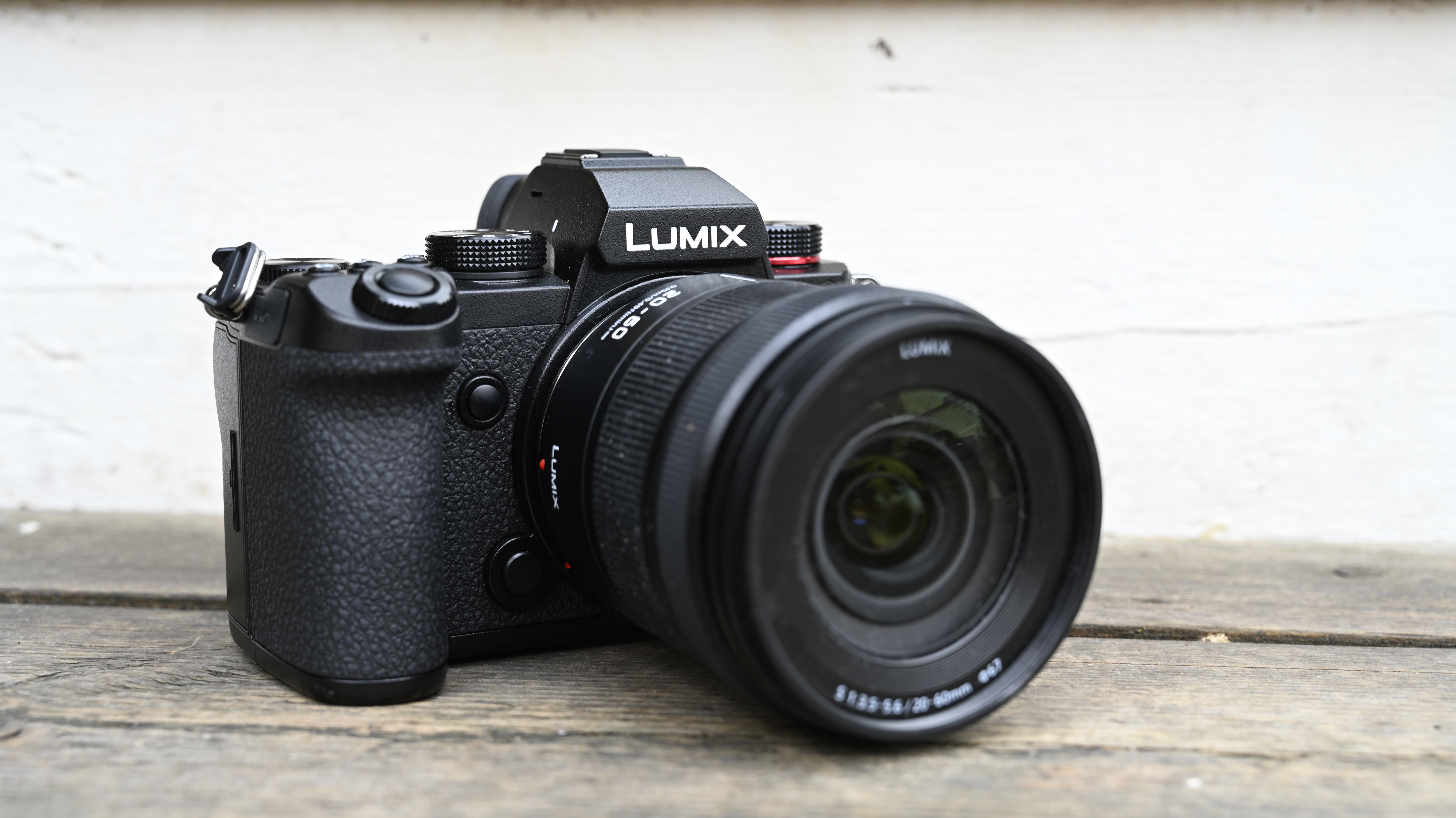
Smaller than the Panasonic Lumix GH5, which has a comparatively tiny Iv Thirds sensor, the Lumix S5 is a great full-frame selection for those who demand a stiff video performer with solid stills performance. While information technology'southward truly a hybrid camera, the S5 is particularly potent when it comes to shooting video, thank you to its uncropped 4K/30p shooting and high-end features that include Dual Native ISO and V-Log recording. If you're looking to shoot vlogging segments, there's as well a vari-angle screen and in-body image stabilization (IBIS) on manus to help, too.
Okay, the mediocre 7fps burst shooting ways it isn't the all-time option for action or wildlife snappers, but information technology does have a 6K photo mode to compensate, which lets you extract 18MP stills from a video sequence. And the autofocus, while non quite up to the level of Sony and Canon's latest full-framers, is certainly meliorate than Panasonic'south previous incarnation. In fact, for video shooters who demand to likewise a large corporeality of stills, the Lumix S5'south simply existent rival at this price point is the incoming Sony A7C.
- Read our in-depth Panasonic Lumix S5 review
Best starter mirrorless cameras
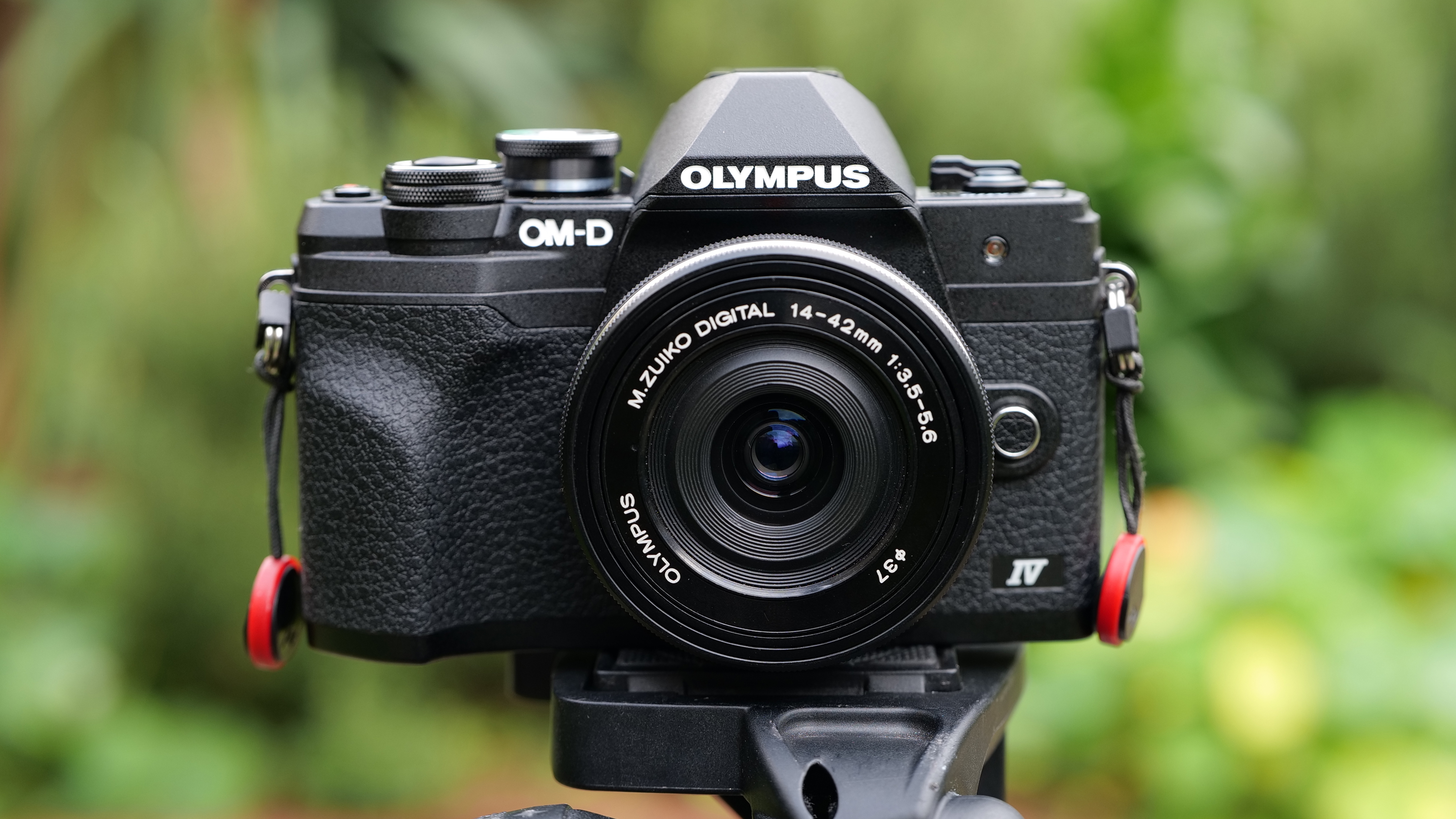
On paper, the East-M10 Marking Iv is an like shooting fish in a barrel camera to overlook. But in reality, it's a top mirrorless camera for beginners and stills photography. It might lack advanced features such as phase-detection autofocus or a microphone input, merely it ticks all of the key boxes for beginners. A compact body and approachable button layout make it an accessible upgrade for smartphone photographers, as exercise Wi-Fi and Bluetooth connectivity.
In our tests, nosotros plant that the 20.3MP sensor to be plenty capable enough to capture consistently attractive images, while in-body epitome stabilization works a care for for shooting snaps at slower shutter speeds. The 121-signal contrast detection autofocus won't make headlines, but it does a decent chore of consistently tracking faces and eyes. Add together classic styling to the mix, plus a handy flip-downwards touchscreen and an Advanced Photo way that makes it easy to experiment with complex techniques and the Mark IV proves itself a well-rounded beginner mirrorless pick.
- Read our in-depth Olympus OM-D Due east-M10 Mark 4 review

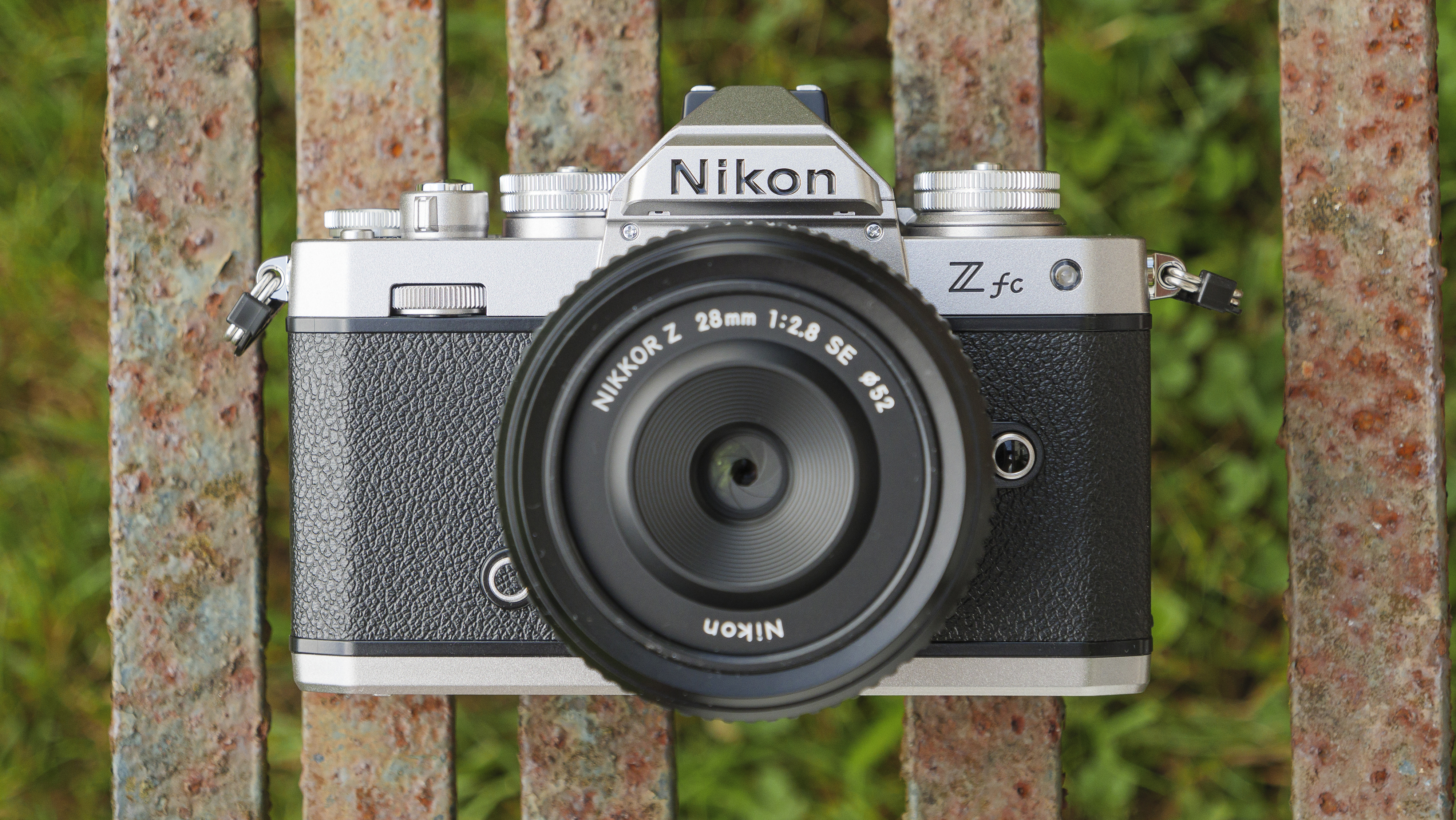
The Nikon Z fc is a gloriously retro take on the Nikon Z50, the camera behemothic's other crop-sensor mirrorless camera. Information technology packs the same specs every bit the Z50 into a body that's inspired by the Nikon FM2 from the early 1980s – and the combination is a triumph for casual shooters who desire a fun camera for travel and everyday shooting.
Information technology might lack a conditions-proof build and the large grip seen on the Nikon Z50, but we institute the Z fc to exist a delight to shoot with. Its competitive specs, which include a 20.9MP sensor, the ability to shoot 4K/30p video, and continuous AF tracking for people and animals, are also borne out in reality. The only downside? A lack of native lenses. If a wide range of APS-C lenses is important to you, then Fujifilm's Ten-serial is a adept alternative – merely otherwise, the Nikon Z fc is a glorious mix of old and new.
- Read our in-depth Nikon Z fc review

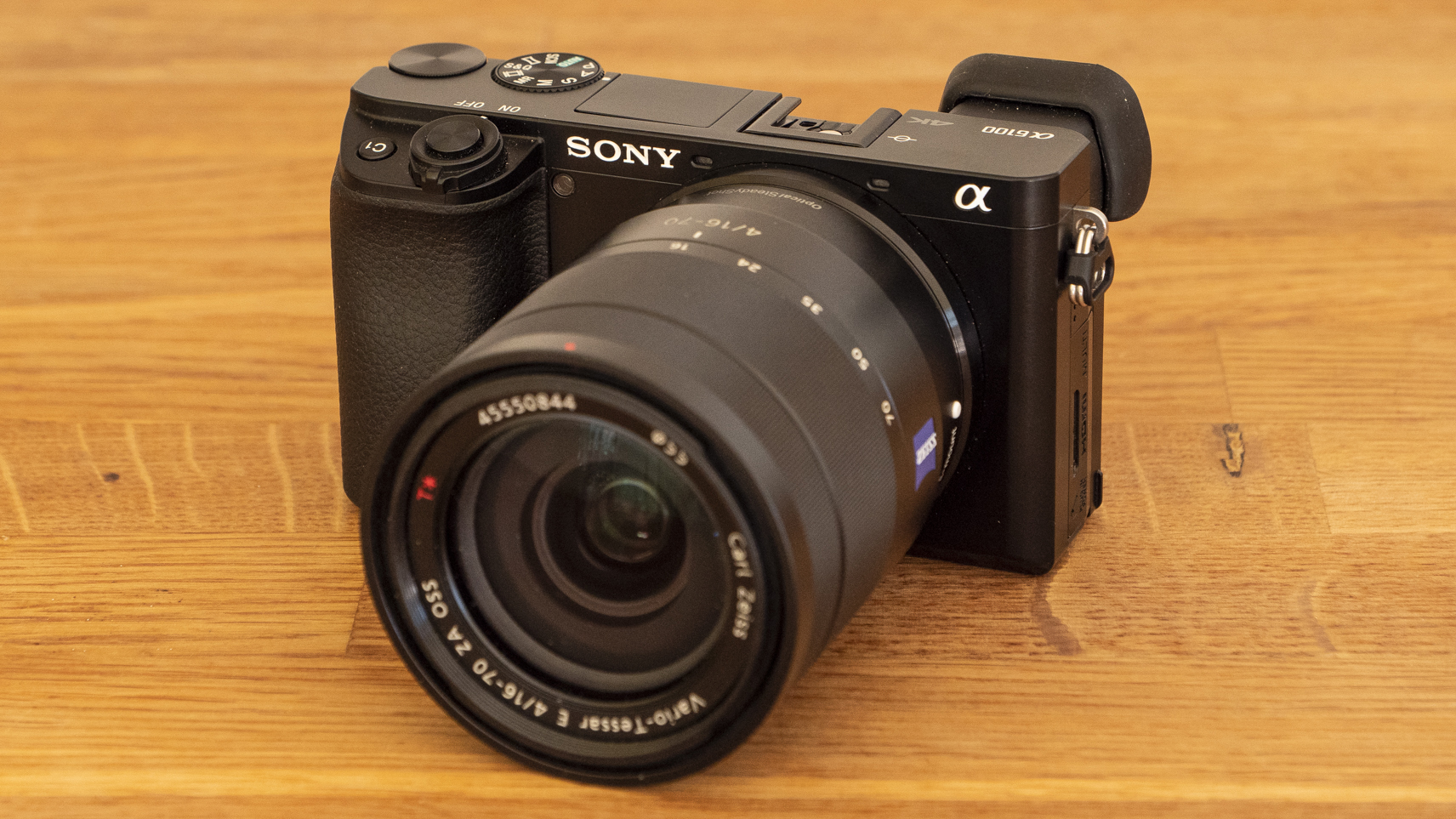
The Sony A6000 remains a popular mirrorless camera for beginners, just v years on from its launch the A6100 brought its skills up to date in a familiar merely more than capable package. Borrowing an APS-C sensor from Sony'southward premium mirrorless cameras, the A6100 also deploys the flagship A6600'due south autofocus organisation to deliver outstanding continuous tracking capability that's rapid and reliable for both stills and video.
Image quality is as expected, with expert detail and decent colors (though a neutral profile would be welcome), while bombardment life is solid and the tilting screen is now touch-sensitive – albeit with express functionality. Not everything has changed, listen: the LCD and EVF both remain relatively depression-res and maximum burst is still 11fps, while buffering performance can sometimes stumble. So it's not perfect and unlocking its full potential can accept time, merely the A6100 is certainly a peak mirrorless all-rounder for a decent price.
- Read our in-depth Sony A6100 review


A fine choice for anyone moving upwardly from smartphone shooting, the Fujifilm 10-T200 combines a large, sharp 3.5in touchscreen with a lovely design that feels much nicer in the hands than its predecessor. Information technology's a big step up from its 10-T100 predecessor in most ways, including autofocus operation. And unlike the Fujifilm X-A7, the 10-T200 besides crucially has a built-in viewfinder for framing your shots.
The but real downside compared to pricier models in this list is that the 10-T200's discipline-tracking can be a little hit-and-miss during burst shooting and isn't available in video fashion. But it otherwise offers splendid value and is a great culling to rivals similar the Sony A6100 (see above) and Catechism EOS M50 Marker II.
- Read our in-depth Fujifilm X-T200 review
All-time advanced mirrorless cameras
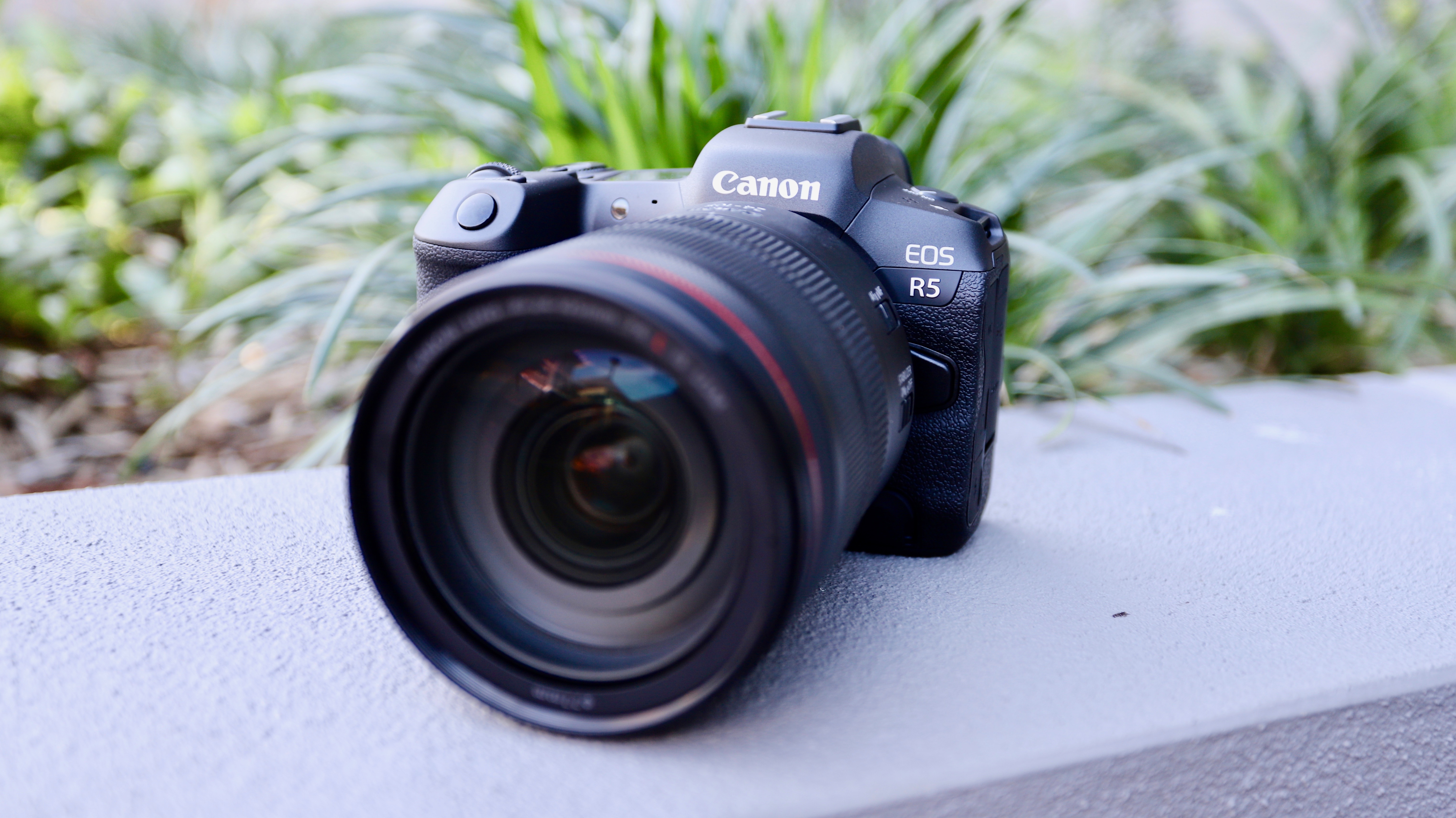
Canon really pulled out all the stops with the EOS R5. Lightweight yet substantial in the hand, it'southward the company's best mirrorless camera so far. High-resolution, total-frame and driven by the powerful Digic X processor, it'due south an infrequent tool for stills photographers. Our tests found its next-gen Dual Pixel autofocus to be outstanding, offering impressively authentic tracking and mind-bravado animal detection. Epitome quality is similarly superlative, producing remarkable results even in low light, with minimal noise even as high every bit ISO 4000. Add together 20fps continuous shooting with the electronic shutter and y'all've got a pro-level mirrorless camera that'due south equally comfortable in the studio as it is on the street.
The EOS R5's battery life can't rival a DSLR, but a expert 4 hours of intensive shooting is possible on a single charge. Its video specs are also staggering for a camera of this size, capturing 8K at upwardly to 30fps or 4K at upwards to 120fps, and contempo firmware upgrades have only boosted its appeal for videographers. However, it's worth bearing in mind that heat restrictions do limit recording times, while 'cool down' periods tin can be lengthy. Making the most of that performance will also require investment in costly CFexpress cards – though if you lot can afford the R5's height-stop price tag, mayhap that won't be an issue.
- Read our in-depth Catechism EOS R5 review


Sony'due south A7R line of cameras has always been nigh resolution, and the A7R 4 remains its top canis familiaris. Our tests institute that its 61MP sensor delivers an excellent level of detail, and is augmented by an impressive Pixel Shift Multi Shooting fashion. An update to the autofocus system has fabricated it faster and smarter, with confront- and eye-detect AF working amazingly well – but with Sony at the helm, there was no doubt most that.
The photographic camera body is at present even more sturdy and better equipped than its predecessors to handle the worst of the elements while out on field, while the deeper grip makes it comfy to use over long periods of fourth dimension. That said, the addition of superlative plate control dial makes the style dial a little harder to access. While the A7R series wasn't designed with videographers in listen, video quality hither is first-class, even if rolling shutter effect is an issue. Perhaps the only downside is the A7R IV's age, with a Sony A7R V rumored to be on Sony'south roadmap.
- Read our in-depth Sony A7R IV review


Similar its GH5 Mark II stablemate, the Panasonic GH6 is outset and foremost a video tool – and information technology'southward one that proves the Micro Four Thirds format notwithstanding has enough to offering filmmakers. Robustly congenital and relatively compact, the new Lumix flagship is besides blest with a remarkable array of video modes, offering outstanding creative flexibility for videographers.
We found its handling to be excellent, with lots of useful interface features: the rear touchscreen can flip, twist and tilt for like shooting fish in a barrel framing, while a second record button on the front benefits self-shooters. Add about unlimited recording times and improved image stabilization algorithms into the mix and the GH6 shapes up every bit a compelling packet for videographers.
It's too a dependable stills photographic camera, with a range of options for specialist shooting, including a 100MP image-stacking Loftier Resolution mode and extremely fast burst shooting (upward to 75fps with the electronic shutter). Nosotros still plant that total-frame rivals offer better low-low-cal operation, while others offer faster, more accurate autofocus systems. But if you want a lightweight video monster that can also turn out solid still images, the GH6 should be near the top of your shopping list.
- Read our in-depth Panasonic Lumix GH6 review

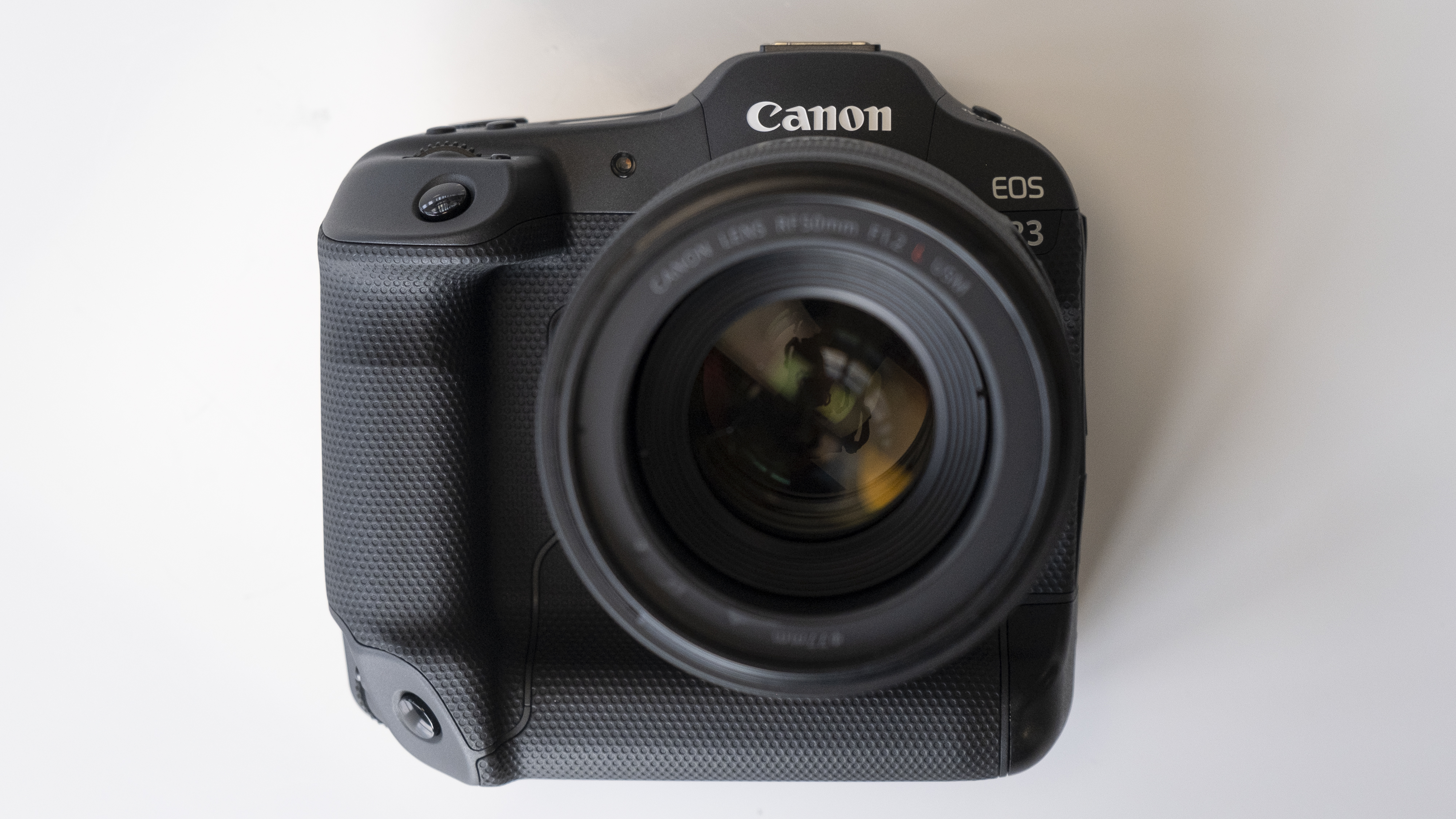
Bearded equally an sometime-school DSLR, the Catechism EOS R3 is actually at the cutting-border of mirrorless functioning in 2022. Combining hybrid skills with a chunky class factor, it harbors a host of imaging innovations. Principal among them is a new 24.1MP CMOS sensor: though its resolution might seem depression, a stacked design delivers rapid 30fps raw burst shooting. Paired with enhanced AF tracking (including Eye Control AF that follows your gaze to select focus points through the viewfinder), the EOS R3 shapes up equally one of the most avant-garde fast-action cameras ever.
The EOS R3 is a video star too: assisted by an articulating touchscreen, it can capture 6K raw video internally at 60p with minimal rolling shutter. It'due south tough enough to travel too, thanks to a robust magnesium alloy build. Aye, the R3 offers more than – and is more expensive – than well-nigh hobbyists volition ever demand. But information technology also sets a fresh criterion for professionals who want a supremely speedy mirrorless camera.
- Read our in-depth Catechism EOS R3 review


Mirrorless cameras are renowned for their technological advancements – and the Sony A1 shows the format'southward evolution isn't slowing. In nearly every way, information technology'due south the best mirrorless photographic camera you tin purchase: elevation burst speeds mean you can capture detailed, high-resolution images at 30fps, while the 759-bespeak hybrid autofocus is equal parts rapid and reliable. The 50.1MP full-frame sensor is also handy for videography, with the A1 capable of shooting 8K footage at 30fps in 10-bit 4:two:0 – or 4K at 120/60fps in x-bit 4:2:2.
In the paw, the A1 hits a comfy sweet spot between Sony's A7 and A9 serial cameras, while the incredible 9.44-one thousand thousand-dot OLED EVF renders the average LCD brandish somewhat superfluous. Its menu organisation is complicated, but that's largely a reflection of the Sony A1's astonishing skill set: this is a mirrorless camera that's as useful for studio portraits every bit it is for fast-paced wildlife action. Yes, in that location are mirrorless cameras that offering better value – and the A1 will exist overkill for the majority of photographers. Only if y'all want the superlative in mirrorless performance in 2022, the Sony A1 should peak your listing.
- Read our in-depth Sony A1 review


Information technology's just a subtle evolution of the original Z7, but Nikon arguably didn't demand to brand too many changes to its impressive, high-resolution full-frame camera. A major criticism has been addressed past the addition of a secondary retention carte slot for this Mark Two version, while our tests institute that its additional processor provides a meaning boost to its all-round performance.
You at present get 4K/60p video recording, plus 10fps shooting and a buffer that clears more quickly than on the Z7. The Nikon Z arrangement is likewise growing at rapid stride, with several lenses and accessories available, making it a much more attractive overall ecosystem than when its predecessor launched in 2018. That'south not to say this camera is perfect – for those who shoot activity, there are amend options out there, like the Canon EOS R6. But for Nikon fans who need that 45.7MP resolution, the Z7 Two is a very potent choice.
- Read our in-depth Nikon Z7 Two review

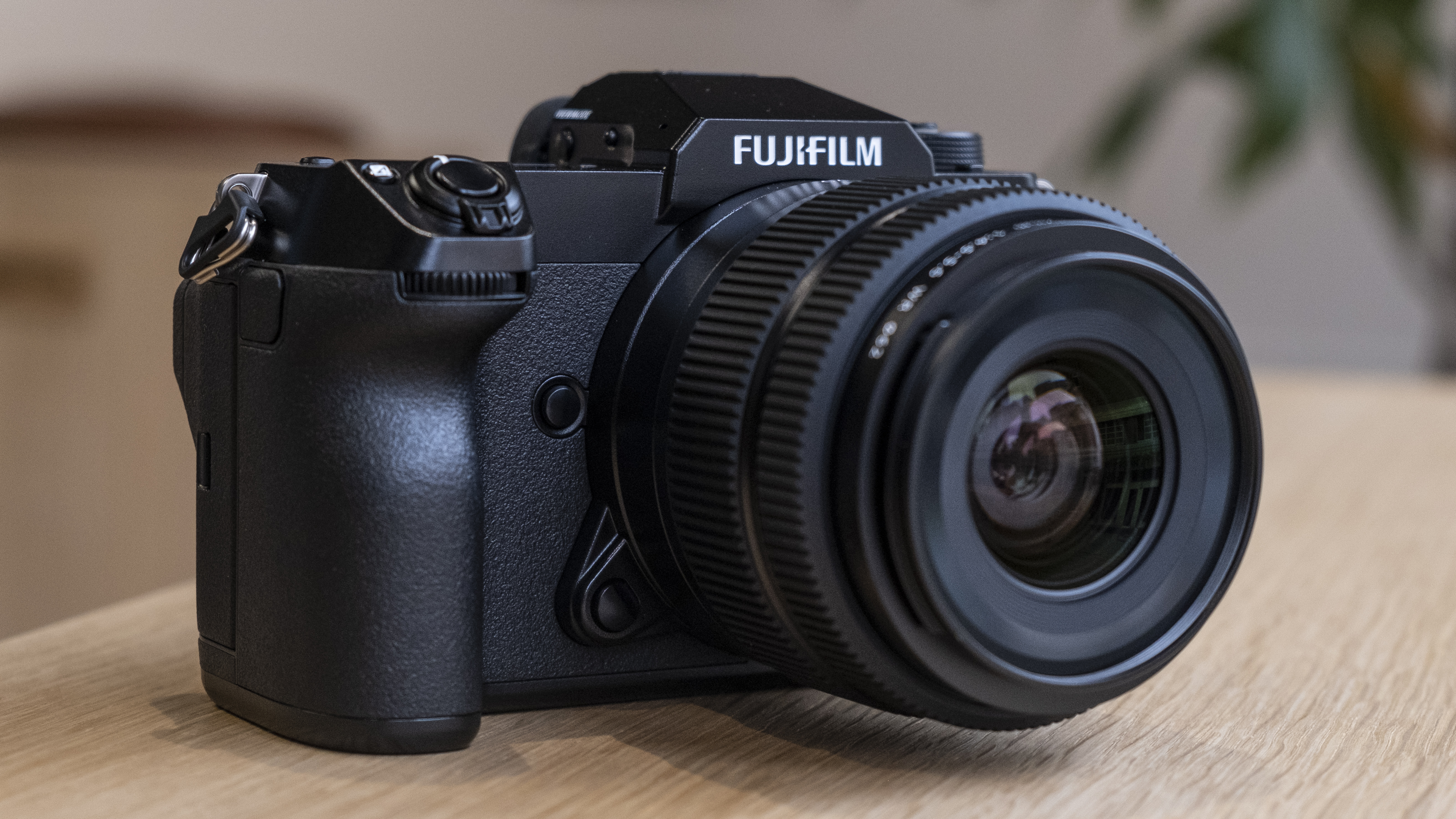
The emergence of medium format as a realistic alternative to full-frame cameras has been one of the biggest stories of the past few years – and the Fujifilm GFX50S II is the best case yet. Its huge sensor, around 1.7x larger than total-frame, does however bring some applied drawbacks, including relatively slow 3fps flare-up shooting and a lack of 4K video (it tops out at 1080p). Simply the benefits for photographers, most notably hugely impressive dynamic range, go far a very tempting alternative if you mostly like to shoot landscapes, portraits, still life or architecture.
When combined with Fujifilm's fantabulous GF lenses, the GFX50S 2's 51.4MP sensor is capable of resolving incredible detail – and that includes depression lite, too. Information technology'south very easy to bring info out of the shadows and highlights without a hit on prototype quality, and images are clean even when taken at ISO 6400. The real game-changers, though, are the GFX50 II'southward relatively affordable price tag and how well it shoots handheld, thanks to its highly effective image stabilization and comfortable treatment.
- Read our in-depth Fujifilm GFX 50S II review


Significantly improved in almost every mode, the third iteration of Sony's A7S is the best of its kind. In fact, it'south the finest hybrid video camera you lot can buy. Rivals might pack superior specs, merely the A7S III sticks with big pixels and a 4K cap for a uncomplicated reason: to be the top 4K video camera. The brand-new 12.1MP back-illuminated sensor can't record 6K or 8K, but it can tape for a very long time in very low light. With incredible noise direction at high ISO levels, the A7S 3 is a liberating camera to shoot with; the simply real limitations are card capacity and bombardment life, which averages 75 minutes when shooting in 4K.
A new impact interface and fully articulating screen bear witness equally intuitive, while an arsenal of on-body controls make inputs a cinch. IBIS and Active stabilization won't totally weigh hand-milkshake but even so steady well, while the customizable 759-point stage-detection AF is fast and reliable, with excellent subject tracking. And despite its video focus, the A7S III can besides produce stunning stills, framed through the 9.44m-dot viewfinder. So what'southward the take hold of? Paired with decent glass and fast storage, the A7S III is a very hefty investment.
- Read our in-depth Sony A7S Iii review

Alternatively...

It might not be every bit great for video as the Lumix GH5, but the G9 prioritizes stills. Like Olympus OM-D Eastward-M1X, the smaller MFT sensor size is made up for by a photographic camera that is packed total of features. Its high resolution combines eight images into a single 80MP photograph, while its amazing image stabilization allows you to shoot handheld for near a second with sharp results. Throw in 60fps shooting, polished handling and a wealth of avant-garde features and the Lumix G9 is a brilliant all-round mirrorless camera that'due south at present also neat value.
- Read our in-depth Panasonic Lumix G9 review

Mirrorless or DSLR: what'due south the departure?
Mirrorless cameras allow you to bandy and modify lenses similar on a DSLR. Simply because the mirror that y'all normally find inside a DSLR has been removed, the camera can (theoretically) be made much more compact.
No mirror ways that instead of optical viewfinders to frame your subject area, mirrorless cameras rely on electronic viewfinders. Be enlightened, though, that most cheaper mirrorless cameras don't come up with viewfinders at all – instead, you compose the photo on the rear screen, merely as yous practice with almost compact cameras or smartphones.
This is a boon in terms of keeping size and price downwardly, merely if y'all're looking to outset taking your photography seriously then a viewfinder is about-on essential. This is because information technology lets you compose photos in all conditions, even sunny ones that tin render a rear screen useless.
You'll find that mirrorless cameras are also known as meaty organization cameras (or CSCs for short), with models ranging from the elementary beginner models to sophisticated full-frame monsters that rival the very best DSLRs out there.
Why are mirrorless cameras improve?
Is a mirrorless photographic camera amend than a DSLR? There are nevertheless quite a few pros and cons to both designs, and then if y'all want to find out more, read our Mirrorless vs DSLR cameras guide.
Mirrorless cameras certainly offer more than pick. If y'all're looking to buy a DSLR, there'due south only actually two chief players in the shape of Canon and Nikon. If y'all opt for a mirrorless photographic camera, the pick is much broader, with the likes of Canon, Panasonic, Fujifilm, Sony, Olympus and Leica all offering a wide range of cameras to adapt most budgets.
Correct now, every major camera manufacturer has something to shout nigh, and their latest models are different enough from their rivals to stand out in some way.
While it would exist very easy to select 10 loftier-cease models to brand up our pick of the best mirrorless camera, we've tried to pick out some more than affordable options as well. These models might non exist dripping with features, simply they correspond great options for new users and those on a budget. That said, if you're looking specifically for a budget mirrorless camera, take a await at our best beginner mirrorless camera guide.
And so whether you're after a better camera than the one featured on your smartphone or are looking for an advanced, high-end model to push your creativity even further, read on to notice out what are the all-time mirrorless cameras you can buy correct now.
How to choose the best mirrorless photographic camera for you lot
It'due south a not bad fourth dimension to buy a mirrorless camera, but also a slightly overwhelming one. An explosion in the number of options available at all price points from the likes of Canon, Sony, Nikon, Fujifilm, Panasonic and a reborn Olympus means that photographers and videographers have never had more selection.
Then where to start? Sensor size is often a good barometer of a camera's character and shooting fashion. Models that are built for professionals and slap-up amateurs volition have either a full-frame sensor or a slightly smaller APS-C scrap. The latter tend to be smaller and more affordable than total-frame cameras, if not quite as portable every bit those with 4 Thirds sensors (from Panasonic and Olympus).
Other important features to look out for are electronic viewfinders (EVFs), which bump upwardly the price only are nigh-on essential for most photographers. Information technology's also worth considering what kind of lenses yous'll demand.
If you like to specialize in a detail expanse (for example, wide-angle architecture or macro), then check the system you're looking at to brand sure it has the right options for yous. In the full-frame mirrorless space, Sony offers the near choice right now, while on crop-sensor APS-C cameras Fujifilm has a wide range of options at most focal lengths.
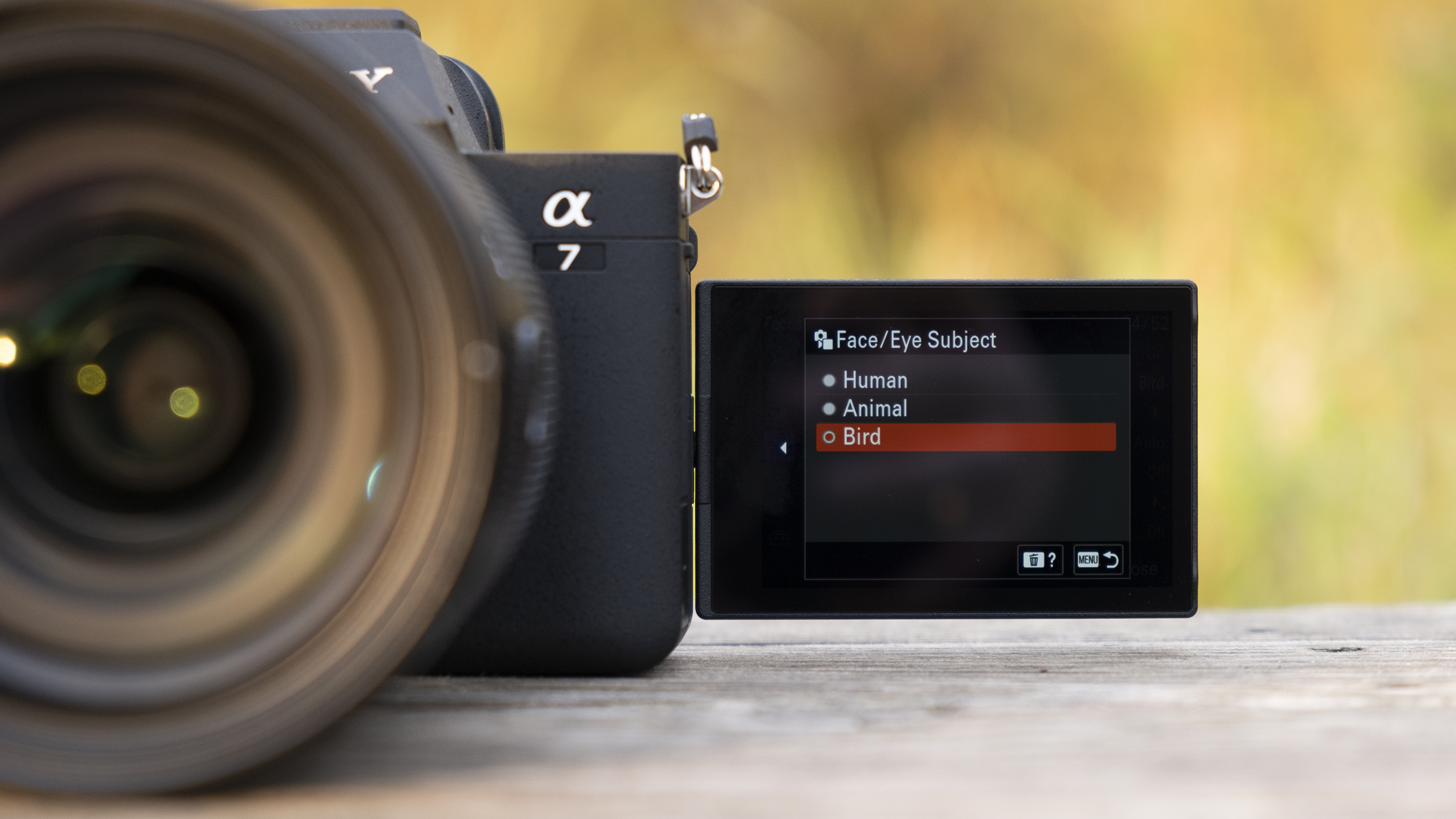
How we test mirrorless cameras
Ownership a mirrorless camera these days isn't cheap, so every camera in this guide has been tested extensively past us. These days, existent-world tests are the most revealing way to understand a camera's performance and character, so nosotros focus heavily on those, forth with standardized tests for factors like ISO performance.
To brainstorm with, we look at the photographic camera's design, handling and controls to get a sense of what kind of lensman information technology's aimed at and who might most enjoy shooting with it. When we take it out on a shoot, we'll utilise information technology both handheld and on a tripod to become a sense of where its strengths lie, and test its startup speed.
To test performance, nosotros use a formatted UHS-i carte du jour (or UHS-II if supported) and shoot in both raw and JPEG (if bachelor). For flare-up shooting tests, we dial in our regular test settings (1/250 sec, ISO 200, continuous AF) and shoot a series of frames in front of a stopwatch to come across if information technology lives up to its claimed speeds. We'll also wait at how speedily the buffers clears and repeat the test for both raw and JPEG files.
In various lighting conditions, we also test the photographic camera'southward different autofocus modes (including Face and Eye AF) in single signal, area and continuous modes. We besides shoot a range of photos of unlike styles (portrait, mural, low calorie-free, macro/close-up) in raw and JPEG to get a sense of metering and its sensor's power to handle dissonance and resolve fine detail.
If the camera's raw files are supported by Adobe Camera Raw, nosotros'll also process some test images to see how nosotros tin button areas like shadow recovery. And we'll also test its ISO performance across the whole range to get a sense of the levels we'd be happy to push the camera to.
Battery life is tested in a real-world fashion, as we use the camera over the course of the twenty-four hours with the screen ready to the default settings. Once the bombardment has reached cipher, we'll then count the number of shots to run into how it compares to the camera'south CIPA rating. Finally, we test the camera'southward video skills by shooting some test footage at unlike frame-rates and resolutions, along with its companion app.
We then take everything we've learned near the camera and cistron in its toll to get a sense of the value-for-money information technology offers, before reaching our final verdict.
- All-time cameras for photography
- Best camera for beginners
- All-time beginner DSLR cameras
- Best DSLR
- Best 4K camera
- Best full-frame camera
- Best compact photographic camera
- What camera should I buy?
- Mirrorless vs DSLR: ten central differences
- Camera rumors
Source: https://www.techradar.com/news/best-mirrorless-camera
Posted by: quirogaughtmed.blogspot.com

0 Response to "What Camera Has The Best Mechanical Zoom"
Post a Comment